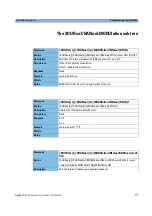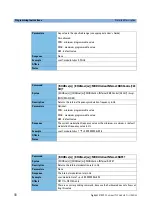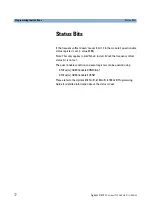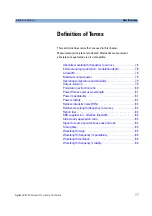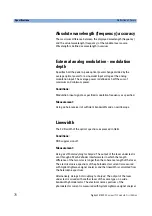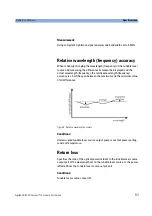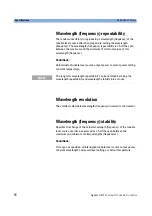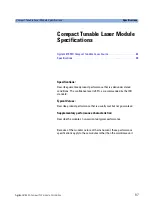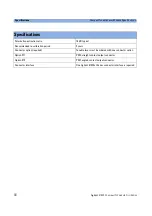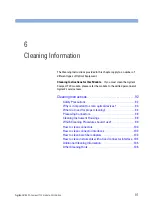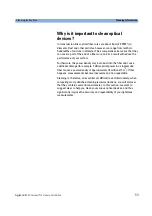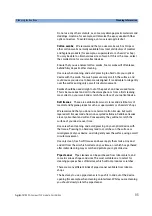
Specifications
Definition of Terms
80
Agilent
81950A Compact TLS module, First Edition
Polarization extinction ratio
Specifies the ratio of the optical power in the slow axis of a connected
polarization-maintaining fiber to optical power in the fast axis, expressed
in dB
Conditions:
Applicable to tunable laser sources utilizing polarization maintaining fiber
that has its TE mode in the slow axis and aligned with the connector key.
Measurement:
Using a polarization analyzer at the end of a polarization-maintaining
patchcord, by sweeping the wavelength to create circular traces on the
Poincaré sphere. Calculate the polarization extinction ratio from the
diameters of these circles.
Figure 6 Circular traces on the Poincaré sphere used to calculate polarization extinction ra-
tio.
Summary of Contents for 81950A
Page 1: ...Agilent Technologies Agilent 81950A Compact Tunable Laser Source module User s Guide ...
Page 9: ...Agilent 81950A Compact TLS module First Edition 9 ...
Page 10: ...10 Agilent 81950A Compact TLS module First Edition ...
Page 24: ...Getting Started Signal Input and Output 24 Agilent 81950A Compact TLS module First Edition ...
Page 30: ...Accessories User s Guides 30 Agilent 81950A Compact TLS module First Edition ...
Page 50: ...Operating Instructions The User Interface 50 Agilent 81950A Compact TLS module First Edition ...


